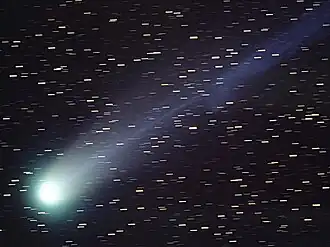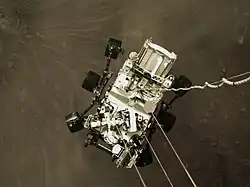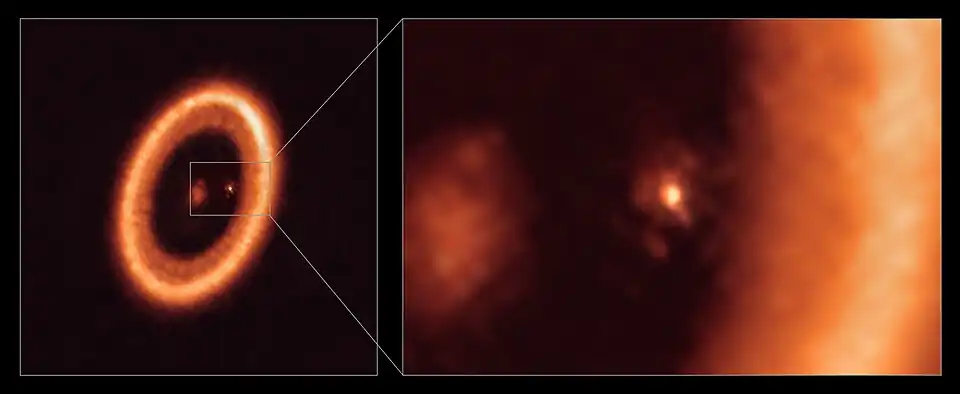C/2021 J1 (Maury–Attard)
| Discovery | |
|---|---|
| Discovered by | Alain Maury Georges Attard |
| Discovery date | 9 May 2021 |
| Orbital characteristics[2] | |
| Epoch | 27 April 2021 (JD 2459331.5) |
| Observation arc | 124 days |
| Number of observations | 106 |
| Aphelion | 51.31 AU |
| Perihelion | 1.741 AU |
| Semi-major axis | 26.53 AU |
| Eccentricity | 0.934 |
| Orbital period | 135±2 years |
| Inclination | 92.719° |
| 88.320° | |
| Argument of periapsis | 147.33° |
| Mean anomaly | 0.479° |
| Last perihelion | 19 February 2021 |
| Next perihelion | ~2154[1] |
| TJupiter | 0.120 |
| Earth MOID | 0.826 AU |
| Jupiter MOID | 2.959 AU |
| Comet total magnitude (M1) | 17.1 |
C/2021 J1 (Maury–Attard) is a Halley-type comet discovered on 9 May 2021, by French amateur astronomers Alain Maury and Georges Attard[3][4] with the MAP (Maury/Attard/Parrott) observation program.[5][6] It is the first comet discovered with the synthetic tracking technique, made possible with the Tycho Tracker commercial software developed by Daniel Parrott.[5] When it was discovered, it had a magnitude of 19.
It has a 124 day observation arc.[2] It came to perihelion on 19 February 2021. The next perihelion will be in early 2154.[1]
References
- ^ a b "Horizons Batch for C/2021 J1 (Maury-Attard) around 2154" (Perihelion occurs when rdot flips from negative to positive). JPL Horizons. Archived from the original on October 1, 2021. Retrieved June 22, 2022. (JPL#4 / Soln.date: 2022-Feb-03)
- ^ a b "JPL Small-Body Database Browser: C/2021 J1 (Maury-Attard)". Jet Propulsion Laboratory. Retrieved September 30, 2021.
- ^ "ALPO COMET NEWS FOR MAY 2021". Cloudy Nights. Retrieved July 13, 2021.
- ^ "New Comet C/2021 J1 (Maury-Attard)". Comet Observation Database. Archived from the original on July 30, 2021. Retrieved July 13, 2021.
- ^ a b Feldmann, Jean-Baptiste (June 7, 2021). "C/2021 J1 Maury-Attard, la comète française inespérée". CIELMANIA : le blog de Jean-Baptiste FELDMANN, photographe du ciel. Retrieved July 13, 2021.
- ^ "MAP history and description". San Pedro de Atacama Celestial Explorations. Retrieved July 13, 2021.
External links
- C/2021 J1 at the JPL Small-Body Database

.png)


